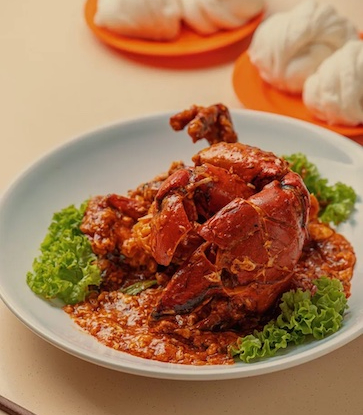In English, the French cooking term à la nage means “in the swim”. The classic definition of nage is a stock typically used to poach seafood, especially fish. Traditionally, nage is a broth flavoured with vegetables, white wine as well as herbs. However, à la nage is also the cooking technique of simmering something gently in a flavourful broth. This broth can be served as a light sauce at the same time with the main dish.

Why cook à la nage?
This technique combines both steaming and poaching. This is because the seafood is not fully submerged in the broth. Both cooking methods are healthy, as liquid brings the heat into the food instead of oil and fat. Steaming allows the seafood to come out tender and soft. At the same time, the poaching from the nage broth flavours the seafood, herbs and vegetables. It’s truly the best of both worlds.
For budding home chefs, it’s an easy cooking method for fish and seafood that anyone can follow as it mainly involves only one pan and easily sourced ingredients. For people who are apprehensive of the fishy smell of seafood, the à la nage method of poaching in a pan slowly ensures that this smell is mostly eliminated.

How to cook a fish à la nage?
1. Sauté vegetables (garlic, onions, fennel and celery) in oil or butter until the mixture turns transparent.
2. Add a poaching mixture of white wine, water and fish stock into a pot.
3. Gently lower the fish into the broth. The fish should only be partially submerged.
4. Bring the broth to a simmer, cover the pot and continue cooking slowly.
5. When the fish is fully cooked, the dish is ready.





















